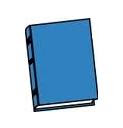When considering short term shelter needs, tents can offer a better level of protection for you or your family. Depending upon the number of people that will require temporary shelter, a tent can be found that will cover most any need. Remember, most people who find themselves in a shelter after a storm or disaster will have little or no privacy and if staying outdoors may not have adequate protection from the weather. Tents can be a valuable option to protect you and your family.
Tents - Advantages
1.) The primary benefit of tents is the relatively low cost of most tents.
2.) Tents also come in all different sizes, shapes, and styles.
3.) Tents can be purchased from several different retail outlets, both online and offline.
4.) Tents can be used for other activities (camping, etc.).
5.) Tents offer a small measure of privacy for you and your family.
6.) Tents offer limited protection from insects and pests when used out doors.
7.) Tents, depending upon their type, can offer limited protection from the weather.
8.) Tents are generally quite portable and easy to transport.
9.) A large number of tents are water-proof to a limited extent.
10.) Some smaller tents can be easily set-up for use indoors if necessary.
Tents - Disadvantages
The main disadvantage to tents is that not every tent is of a strong and durable enough nature that it will afford a high level of protection during extremely bad weather conditions.
Tent Types
Dome Tents
This type of tent has a rudimentary dome shape formed by inward curving walls that meet at the apex.
Advantages: They generally have ample headroom and offer the ability to sit upright. They can also be set indoors without stakes.
Disadvantages: Two pole designs leave a significant portion of unsupported tent material. This restricts use to moderate weather conditions only.
Modified Dome Tents
This is a dome tent with a few variations: the addition of more poles plus cross-section rods, as will generally have tapered ends.
Advantages: This type is able to withstand harsher weather and higher wind levels.
Pyramid Tents
These are little more than a waterproof tarp staked to the ground and draped over a central pole.
Advantages: Extremely easy to set up.
Disadvantages: It can leave you exposed to weather conditions and outdoor pests.
Tunnel Tents
This type of tent is designed in the shape of a tunnel. Usually the front has the most ceiling height (allowing just enough room to sit upright) and tapers towards the rear. This tent type incorporates a single or dual pole design with the longer pole upfront. They are generally a single person type of tent.
Advantages: Very lightweight.
Disadvantages: Design type tends towards being cramped.
Cabin Tents
Cabin tents are what is known as single-skin tents and are used mainly in the United States. They often have nylon walls, polyester roof, and a polyethylene floor, plus an awning at one or both ends. Removable internal dividers allow the cabin to be split into different areas or rooms.
Advantages: They offer more room allowing the use of other optional equipment in the form of cots, etc. They also can accommodate a larger number of persons comfortably.
Disadvantages: Cabin tents are bulkier, heavier, and generally will require assistance while being set-up.
More information on the different types of tents can be found here:
http://en.wikipedia.org/wiki/Tent#Current_tent_stylesI currently have dome tents, a modified dome tent for my family and a two room cabin tent to handle my temporary shelter needs. An example of my family dome tent can be found here:
Riverwalker’s Gear-Magellan-16-x-10 TentWhen considering short term
shelter needs due to a storm or disaster, tents offer a higher level of protection than the use of tarps. They offer beneficial options for you and your family.
Staying above the water line!
Riverwalker


























